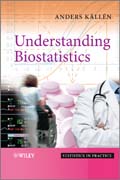
INDICE: Preface 1 Statistics and Medical Science 1.1 Introduction 1.2 On the Nature of Science 1.3 How the Scientific Method uses Statistics 1.4 Finding an Outcome Variable to Assess your Hypothesis 1.5 How We Draw Medical Conclusions from Statistical Results 1.6 A Few Words about Probabilities 1.7 The Need for Honesty - the Multiplicity Issue 1.8 Pre-Specification and p-value History1.9 Adaptive Designs - Controlling the Risks in an Experiment 1.10 The Elusive Concept of Probability 1.11 Comments and Further Reading References 2 Observational Studies and the Need for Clinical Trials 2.1 Introduction 2.2 Investigations of Medical Interventions and Risk Factors 2.3 Observational Studies andConfounders 2.4 The Experimental Study 2.5 Population Risks and Individual Risks 2.6 Confounders, Simpson's Paradox and Stratification 2.7 About Incidence and Prevalence in Epidemiology 2.8 Comments and Further Reading References 3 Study Design and the Bias Issue 3.1 Introduction 3.2 What Bias is All About 3.3The Need for a Representative Sample - About Selection Bias 3.4 Group Comparability and Randomization 3.5 Information Bias in a Cohort Study 3.6 The Study,or Placebo, Effect 3.7 The Curse of Missing Values 3.8 Approaches to Data Analysis - Avoiding Self-inflicted Bias 3.9 On Meta-analysis and Publication Bias3.10 Comments and Further Reading References 4 The Anatomy of Statistical Tests 4.1 Introduction 4.2 Statistical Tests, Medical Diagnosis and Roman Law 4.3The Risks with Medical Diagnosis 4.3.1 Medical Diagnosis based on a Single Test 4.3.2 Bayes' Theorem and the Use and Misuse of Screening Tests 4.4 The Law - a Non-Quantitative Analogue 4.5 Risks in Statistical Testing 4.5.1 Does Tonsillectomy Increase the Risk for Hodgkin's Lymphoma? 4.5.2 General Discussion about Statistical Tests 4.6 Making Statements about a Binomial Parameter 4.6.1 The Frequentist Approach 4.6.2 The Bayesian Approach4.7 The Bell Shaped Error Distribution 4.8 Comments and Further Reading References 4.A Appendix: The Evolution of the Central Limit Theorem 5 Learning About Parameters, and Some Notes on Planning 5.1 Introduction 5.2 Test Statistics Described by Parameters 5.3How We Describe Our Knowledge about a Parameter from an Experiment 5.4 Statistical Analysis of Two Proportions 5.4.1 Some ways to compare two proportions 5.4.2 Analysis of the group difference 5.5 Adjusting for Confounders in the Analysis 5.6 The Power Curve of an Experiment 5.7 Some Confusing Aspects of PowerCalculations 5.8 Comments and Further Reading References5.A Some Technical Comments 6 Empirical Distribution Functions 6.1 Introduction 6.2 How to Describethe Distribution of a Sample 6.3 Describing the Sample - Descriptive Statistics 6.4 Population Distribution Parameters 6.5 Confidence in the CDF and its Parameters 6.6 Analysis of Paired Data 6.7 Bootstrapping 6.8 Meta-Analysis and Heterogeneity 6.9 Comments and Further Reading References 6.A Some Technical Comments 7 Correlation and Regre
- ISBN: 978-0-470-66636-4
- Editorial: John Wiley & Sons
- Encuadernacion: Cartoné
- Páginas: 384
- Fecha Publicación: 25/03/2011
- Nº Volúmenes: 1
- Idioma: Inglés
